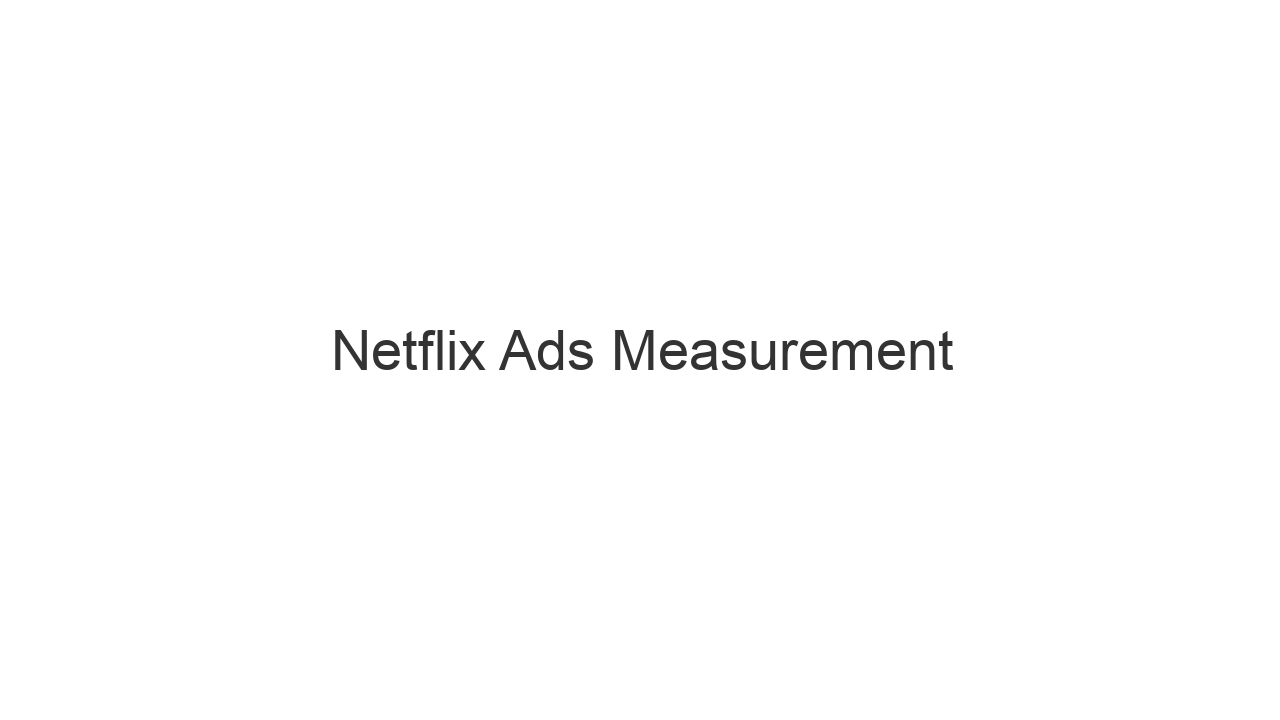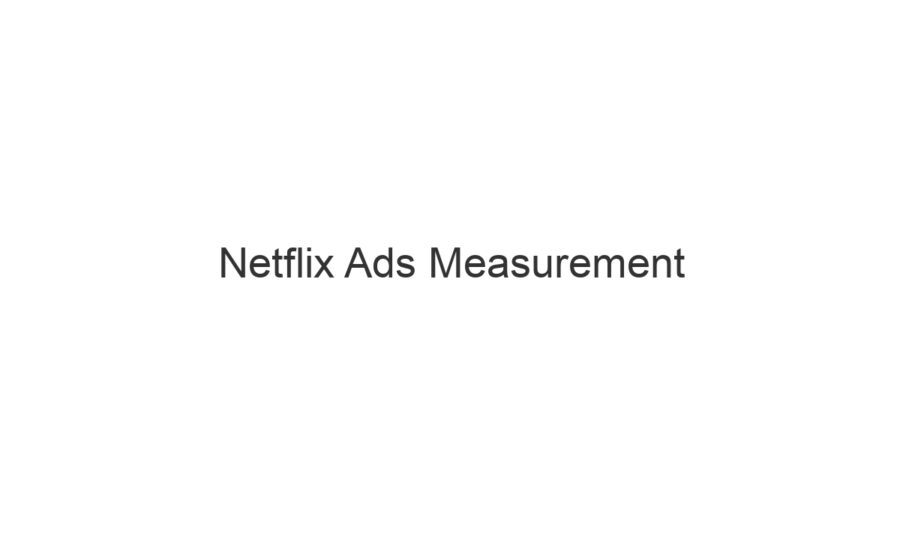| My riff on Netflix measurement is a bit longer than normal, but it does highlight that what may look like an easy task initially, is not.
One big thing
Ana Miliceviz of Sparrow put on a Twitter spaces this week with Eric Seufert, Terry Kawaja and Lou Paskalis jumping in. Myself just a regular listener. And the chat is good, you can catch the recording.
Of course the conversation naturally touched on the issue of measurement. As Netflix may launch without measurement and are struggling to measure reach. I thought I’d share more on why this isn’t as simple as it seems.
To think about measurement of Netflix ads, we need to think about what makes Netflix good. And consistently it is the experience, the app, whilst having received flack over time, I would say is consistently better than the competition. Have you ever used YouTube, even on your phone, and the ad has loaded in high quality, then the video itself is slow to load or in low quality? The reason is the ads are hosted somewhere else. This is exactly what Netflix will want to avoid, a diminished experience. And, on tv, sitting on the couch. That’s exactly what you don’t want. So the addition of ads, is a genuine threat on their core product experience.
And to make that product experience good, Netflix has pioneered many different creative ways of delivering content to you. They auto generate many different ratios of a tv show, so that if you are on mobile, and your signal drops, it can swap to a different version seamlessly. They have experimented with putting more ‘local hubs’ of storage for content closer to you. And often they have deals with ISPs, who provide your internet, to have local caches of shows with them. All of this to help avoid, what happened with shows like Game of Thrones on HBO, bringing the service down. Each of these content optimization decisions, means, that adding an ad to a tv show, is not that simple.
For example, lets say I’m in New Zealand, and I open up Stranger Things, chances are it is cached at the local ISP, which is within 25km of me. So the show loads fast. But the ad, has to ping the Microsoft server, and respond, then send me an ad. That ad isn’t cached on the ISP. So the dynamic relationship with the user changes. Now you want to get measurement in there, in a timely fashion.
Then you have to consider all the different ways people watch Netflix! In a browser, on my tv, from my Apple TV, iPad, iPhone. On our iPad mini, we have an old, no longer supported version of the Netflix app, which still works. Xboxes, PlayStation’s, all the Android devices.
Each of these, has to be compliant, and then in a way that avoids opening the kimono and having to update all of these apps. We once did a campaign with a telecommunication company, spurred on by direct emails to customers. And we saw over 30,000 different versions of browsers opening the content. And the long tail included browsers that were off the market for over 10 years, Windows 98 etc. It happens. For Netflix, this is no small undertaking.
That is the context, at which you need to think about adding measurement. The technical delivery of a measurement pixel, is a herculean effort itself. And that’s without even considering adding third party pixels etc. My inkling is that measurement on Netflix will be a lot longer than anyone thinks, as they navigate these challenges.
Once you’ve got technical delivery set, you also need to consider data leakage. Is our methodology retaining privacy. As just by virtue of all of these things phoning home, you can be giving data away.
At this point, Netflix can then start to think about what their roadmap should look like. Measurement needs to support the strategic sell. This is where there’s art and science on the positioning, if you measure the wrong things, it can send the wrong signal to buyers. You want to enhance your differentiation in the market, not erode it. Which is a continual challenge for any media sales team.
If I was Netflix, I would first just do geography and watches. Keep it super simple. Here’s how many people watched and in what GEOs. This for media buyers, helps them cover off the basics. And lets the sales team weave a narrative.
Based off the early feedback, would then look to build upon that. Probably things like time of day, how people are watching.
Then, maybe you get into interests and other contextual information.
The latter is where Netflix can really shine, viewers of Stranger Things, or people in binge mode, or sports documentaries etc. Timing your ad, to show within those different contexts. Family viewing.
The Netflix way would also be to have some sort of dashboard, to really let it shine. Spotify Ads, is probably a good reference for this, as it is functional, supports the narrative. But for any serious spend, you’re still getting the custom report/pitch at the end etc.
Longer term, the question will be, what is the ambition? Is it to get to a programmatic ads, like a YouTube, where in niches the CPV is higher. Or like a Twitter or Snap and stick with direct deals. Given the international nature, I would suspect they will stick with the former, for a lot longer. As the markets aren’t as competitive.
In prior newsletters I have noted that in local markets Netflix have faced pressure in the past over hurting local tv production etc (like the Walmart going into a small town effect). These local broadcasters streaming services are the current receiver of these ad dollars that will likely switch to Netflix.
Hope you can see, why, something so simple an idea, can in reality be quite a process to thread the needle. Especially when the initial guidance is for 500,000 users on the ad supported tier. |





